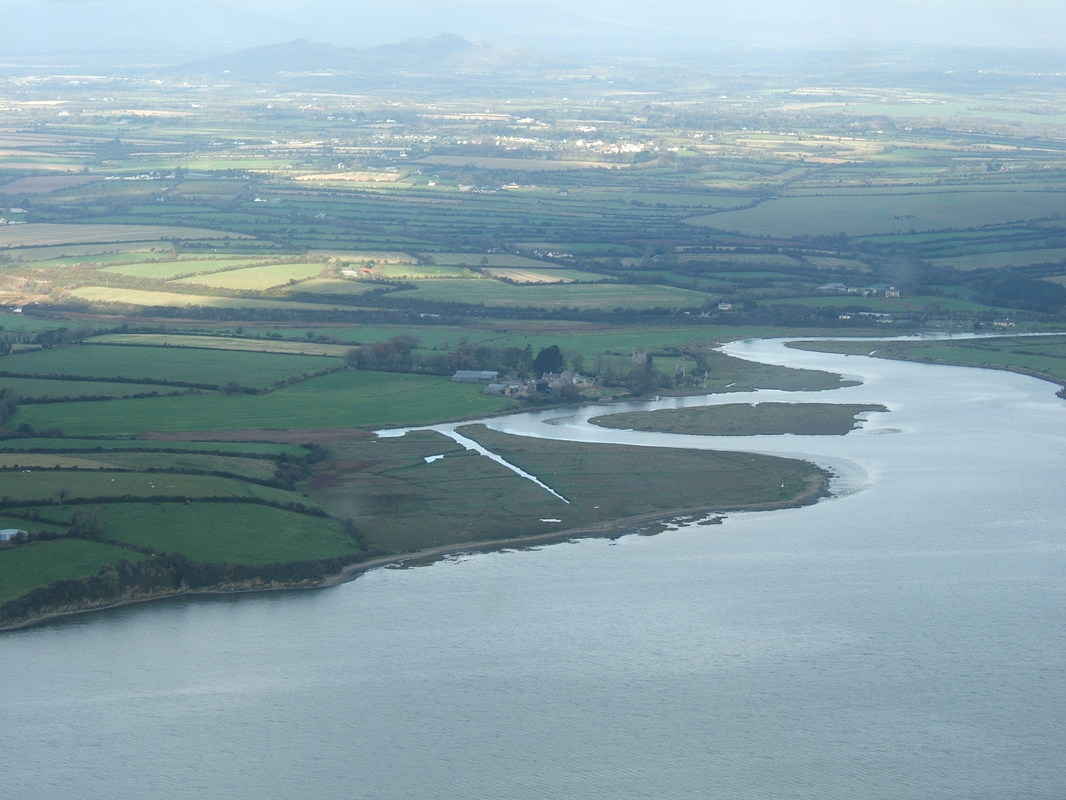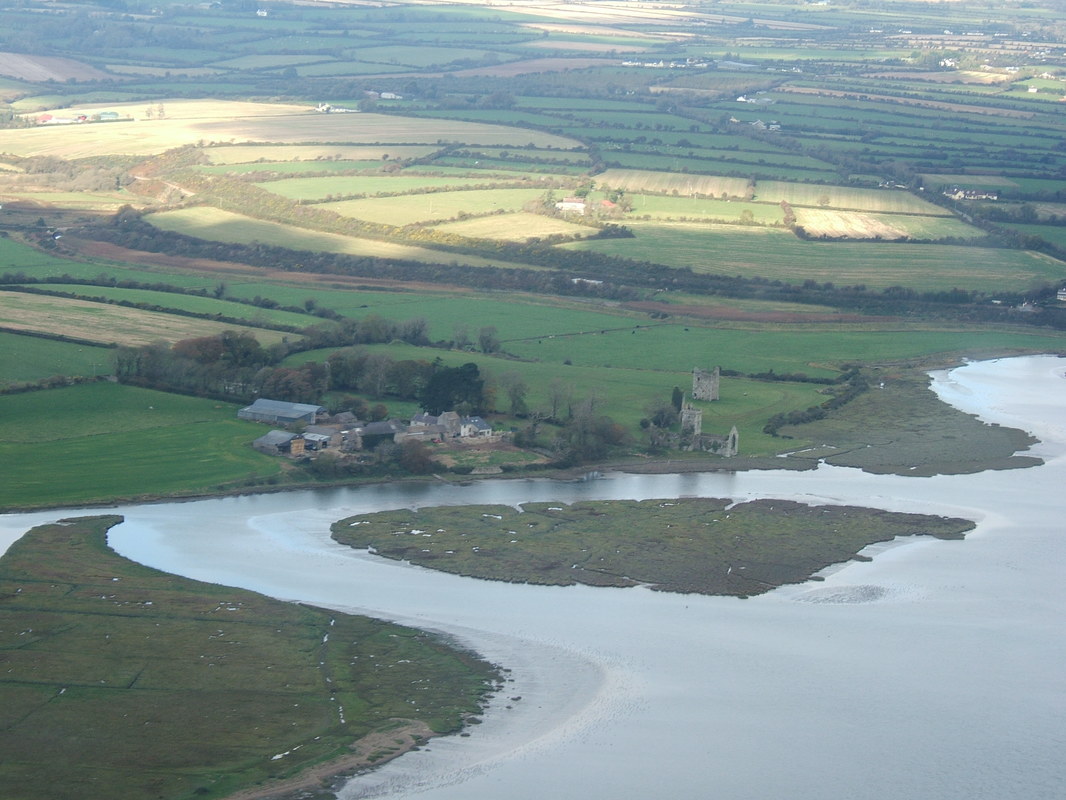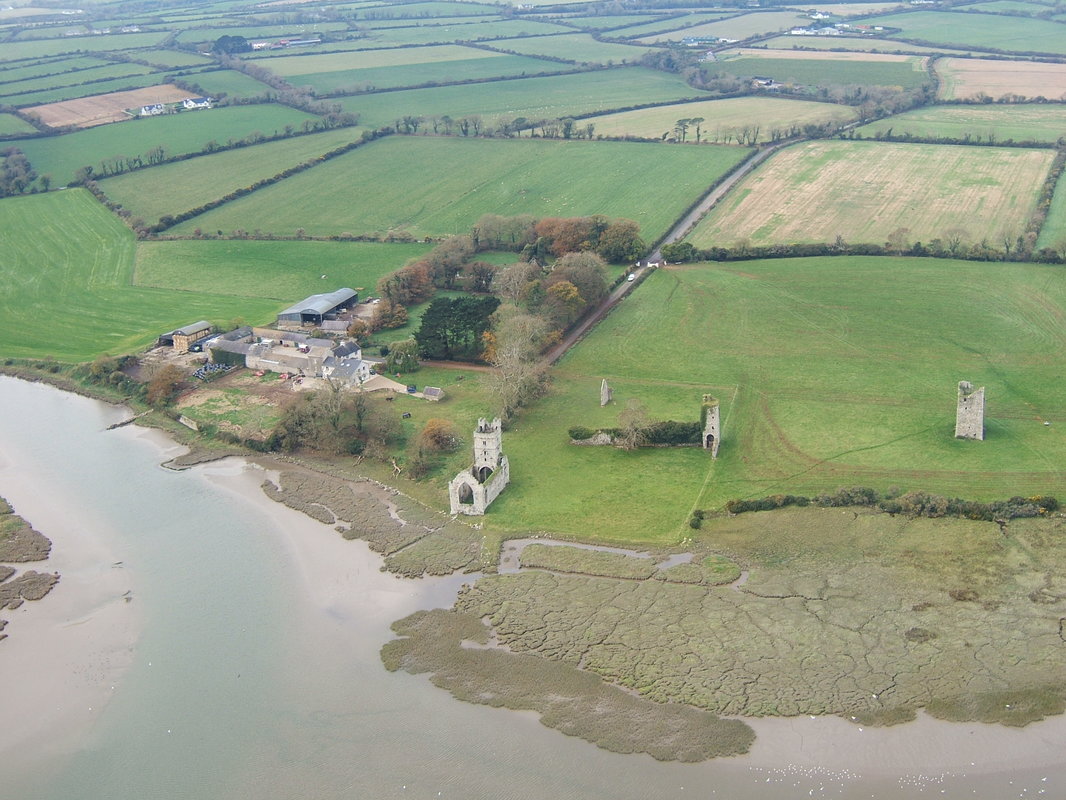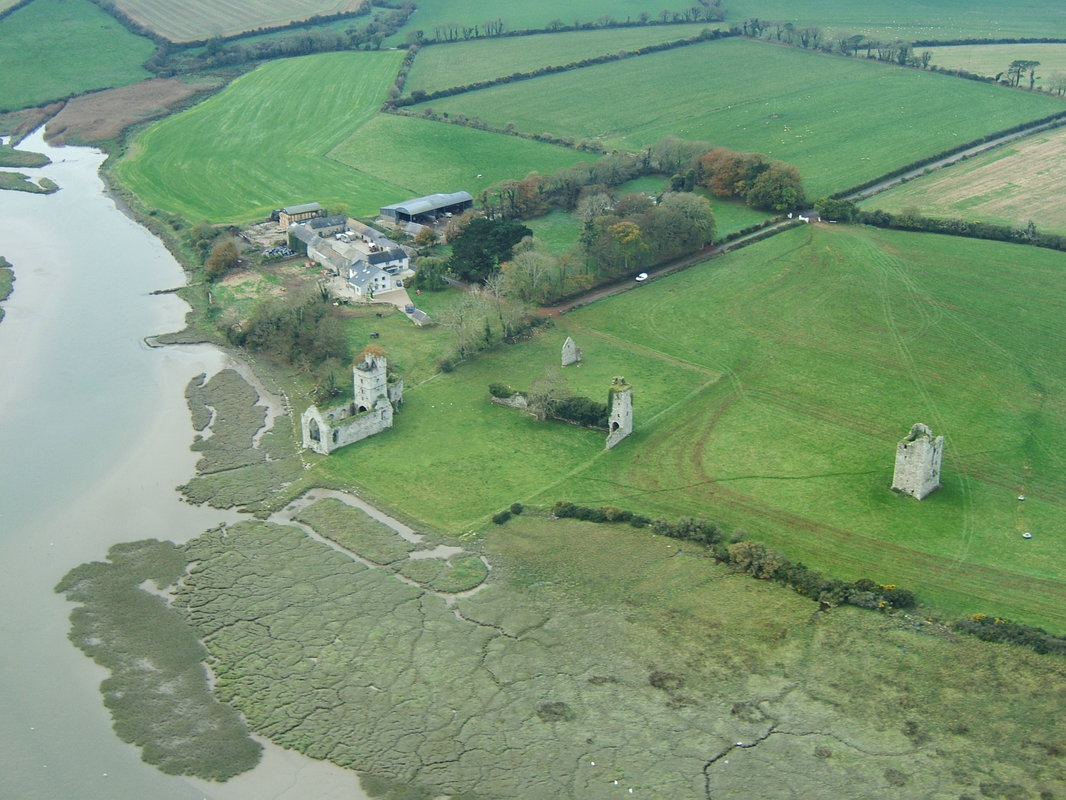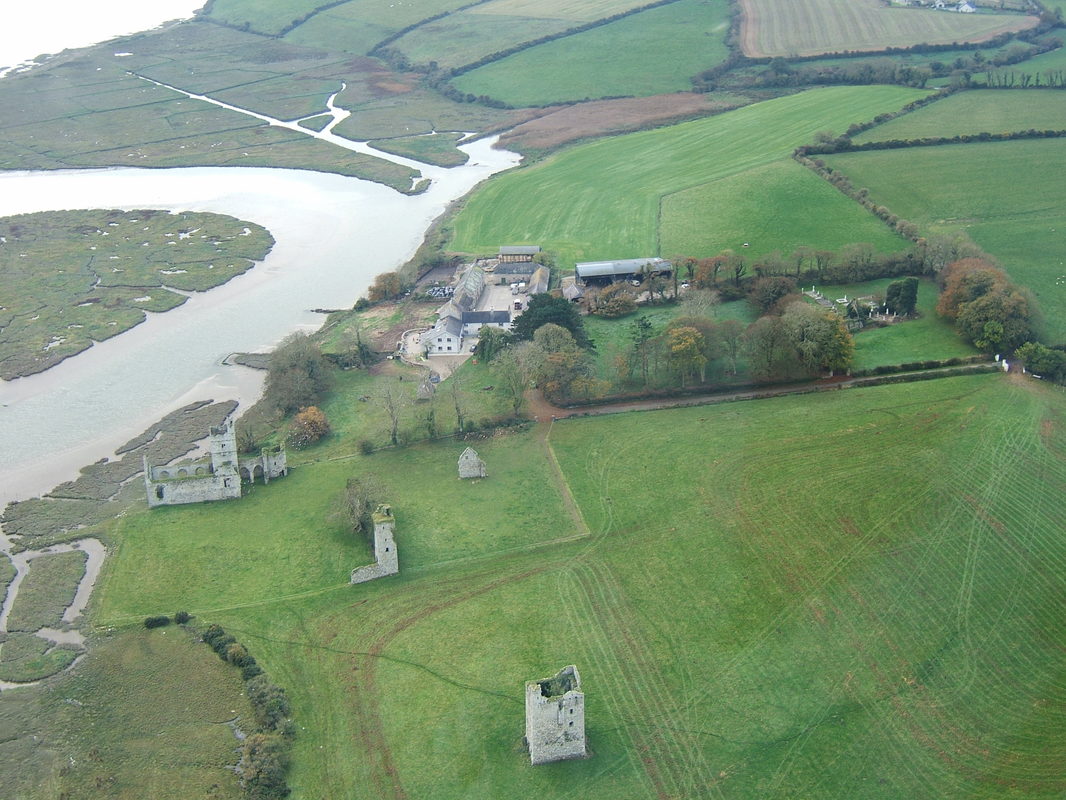"Will you come with me for a walk through the town that died ? It won't take very long - and anyhow the town wants to be walked through - as if it was lonely for the sound of feet and voices and bells and sailors, miners, children, ships, rumbling cars and shrieks of abuse and laughter. It's name ? Clonmines ."
Furlong, N., 'The Town that Died' in Wex. Hist. Soc. Jn., i, (1968), pp 35-42.
Furlong, N., 'The Town that Died' in Wex. Hist. Soc. Jn., i, (1968), pp 35-42.
The ruins of the medieval town of Clonmines are nestled on the shore of Bannow Bay in the Barony of Shelburne, Co.Wexford. Its waters lap against the majestic Abbey and its deep swift running channel sweeps by its quay. Here the Codd family farm the land in peace and privacy, raise their children and fatten their lambs and bullocks, ever conscious of the responsibility to conserve the magnificent heritage which surrounds them.
In recent years it has been necessary to seek funding in order to undertake vital works to keep the monuments from falling to the ground. The Heritage Council and Wexford County Council have not been found wanting and their continued interest, encouragement and financial support have ensured that not only does there exist a Conservation Plan, but that considerable headway has been made in putting that plan into action. Substantive works have been carried out on the Black Castle and on the Abbey in recent years. Further works have been identified and prioritised for future action.
One of the requirements of the Heritage Council and Wexford County Council has been that the family facilitate the sharing of knowledge about Clonmines, its history, its archaeology and its importance as a relic of times past. Clonmines must remain private. However the family understands the very real desire there is among many people to visit and see the site for themselves.
A compromise is being trialled which will entail the publication of information relating to the site, including the reports and plans etc. which are in the family's possession, on this website, in tandem with a planned public access programme which will see the site open to the public for five afternoons during the summer of 2017.
If we are all respectful of each other it will work for us all.
In recent years it has been necessary to seek funding in order to undertake vital works to keep the monuments from falling to the ground. The Heritage Council and Wexford County Council have not been found wanting and their continued interest, encouragement and financial support have ensured that not only does there exist a Conservation Plan, but that considerable headway has been made in putting that plan into action. Substantive works have been carried out on the Black Castle and on the Abbey in recent years. Further works have been identified and prioritised for future action.
One of the requirements of the Heritage Council and Wexford County Council has been that the family facilitate the sharing of knowledge about Clonmines, its history, its archaeology and its importance as a relic of times past. Clonmines must remain private. However the family understands the very real desire there is among many people to visit and see the site for themselves.
A compromise is being trialled which will entail the publication of information relating to the site, including the reports and plans etc. which are in the family's possession, on this website, in tandem with a planned public access programme which will see the site open to the public for five afternoons during the summer of 2017.
If we are all respectful of each other it will work for us all.
This project is supported by The Heritage Council

